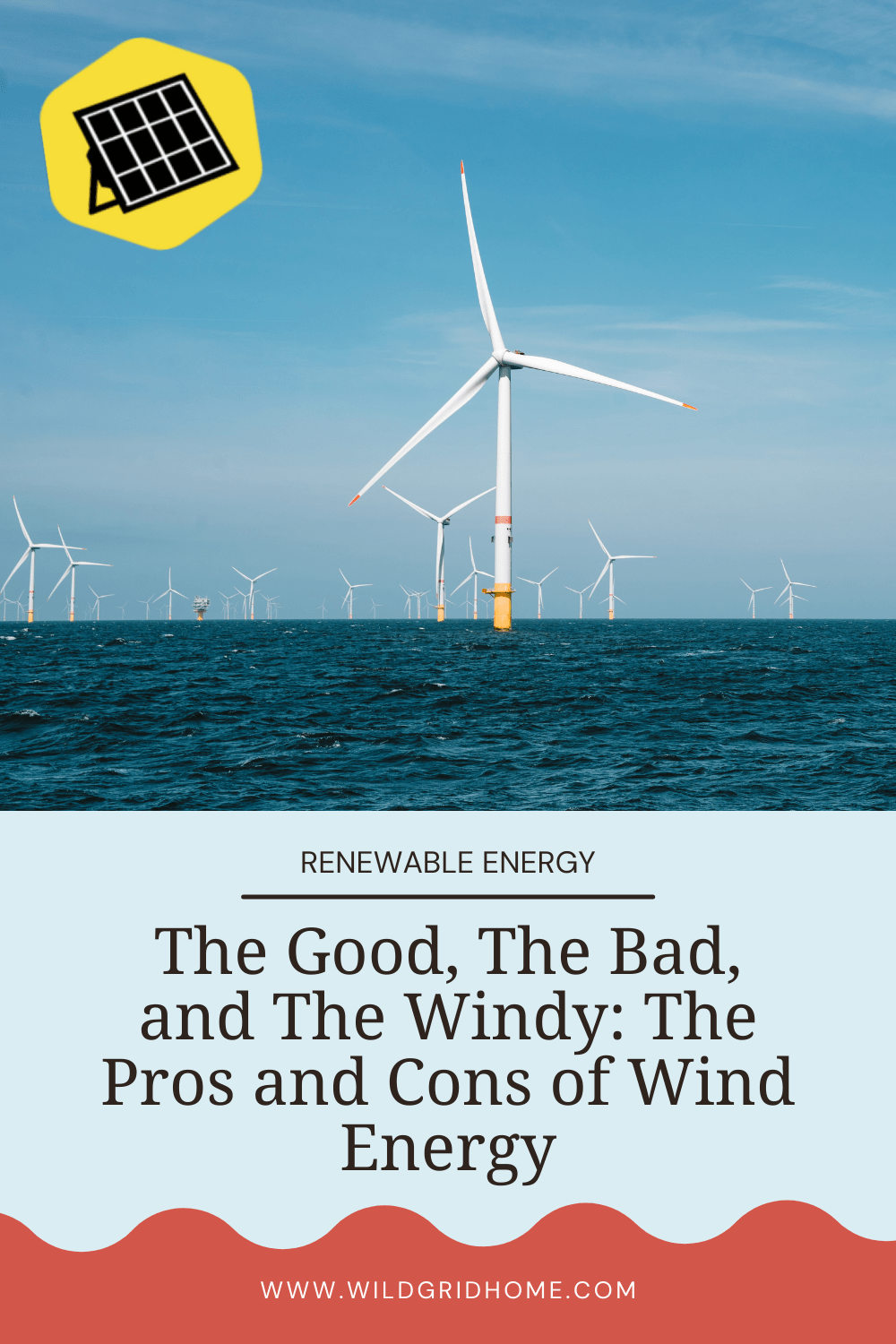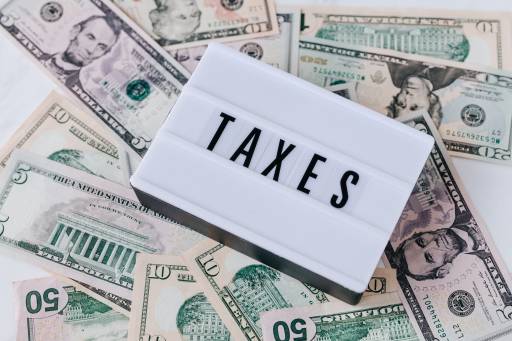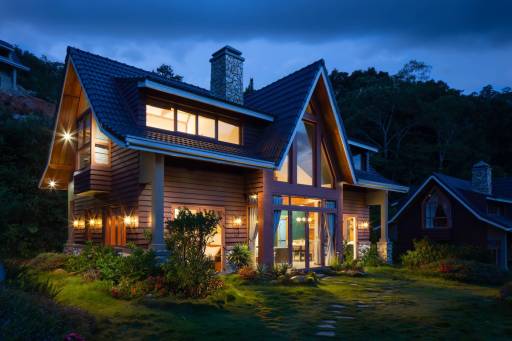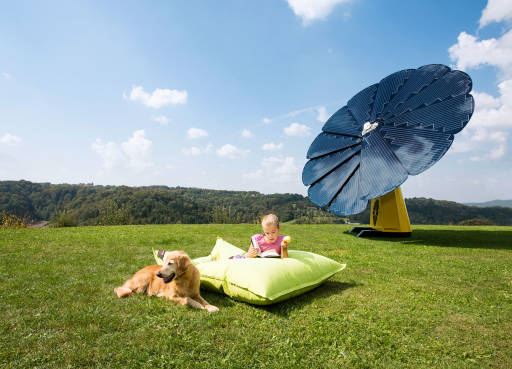The Good, The Bad, and The Windy: The Pros and Cons of Wind Energy
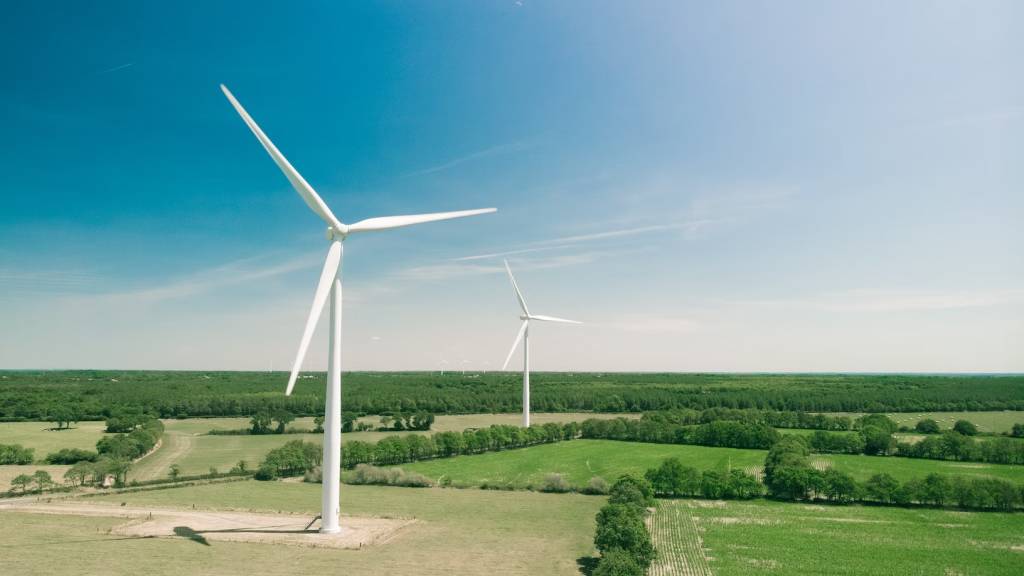
We’ve all been driving down the road and suddenly come upon those huge, white, slowly-turning wind turbines. They look cool but, like, what’s up with wind energy? What are the pros and cons of wind energy? Is it worth looking into?
Spoiler: it is. 🌬️ Those big spinny turbines can look intimidating, but wind energy is pretty amazing and — if you didn’t already know can save you money on your electricity bills!
Like anything, wind energy has some pros and cons…we’ll give you all the deets so you can decide for yourself!
How does a wind turbine work?
Wind turbines are used to capture energy from the wind and then converted into electricity that can be used to power homes, businesses, and communities. The process to harness this energy involves using the blades of a wind turbine to spin a generator. The spinning blades create electricity that is then sent to the power grid or used directly by the local area.
To put it simply — wind moves blade, we get power! ⚡️
But that’s not all! Wind turbines can also be installed onshore or offshore in a wide range of environments. All of this makes wind energy sound super attractive.
Wind turbines have a bunch of moving parts and each has a specific function. To keep it short and sweet, turbines have three main parts: the rotor, the nacelle, and the tower.
The rotor blades on a wind turbine are curved on one side of the blade while the other is flat. Wind flows more quickly along the curved edge, creating a difference in pressure on either side of the blade, which causes the blade to turn.
The nacelle contains a set of gears and a generator. The blades are linked to the generator by the gears. The gears create a rotational energy that the generator converts into electrical energy
The tower has the blades and nacelle mounted on top. The tower is designed to hold the rotor blades off the ground at an ideal wind speed. Electricity is then sent from the generator down the tower to be transported to the grid.
To generate electricity, wind speeds need to reach six to nine miles per hour (mph). If wind speeds reach 55 mph and above, the turbines will shut down to prevent equipment damage.
So…now that we know a little bit about how it works. Let’s talk about wind energy pros and cons.
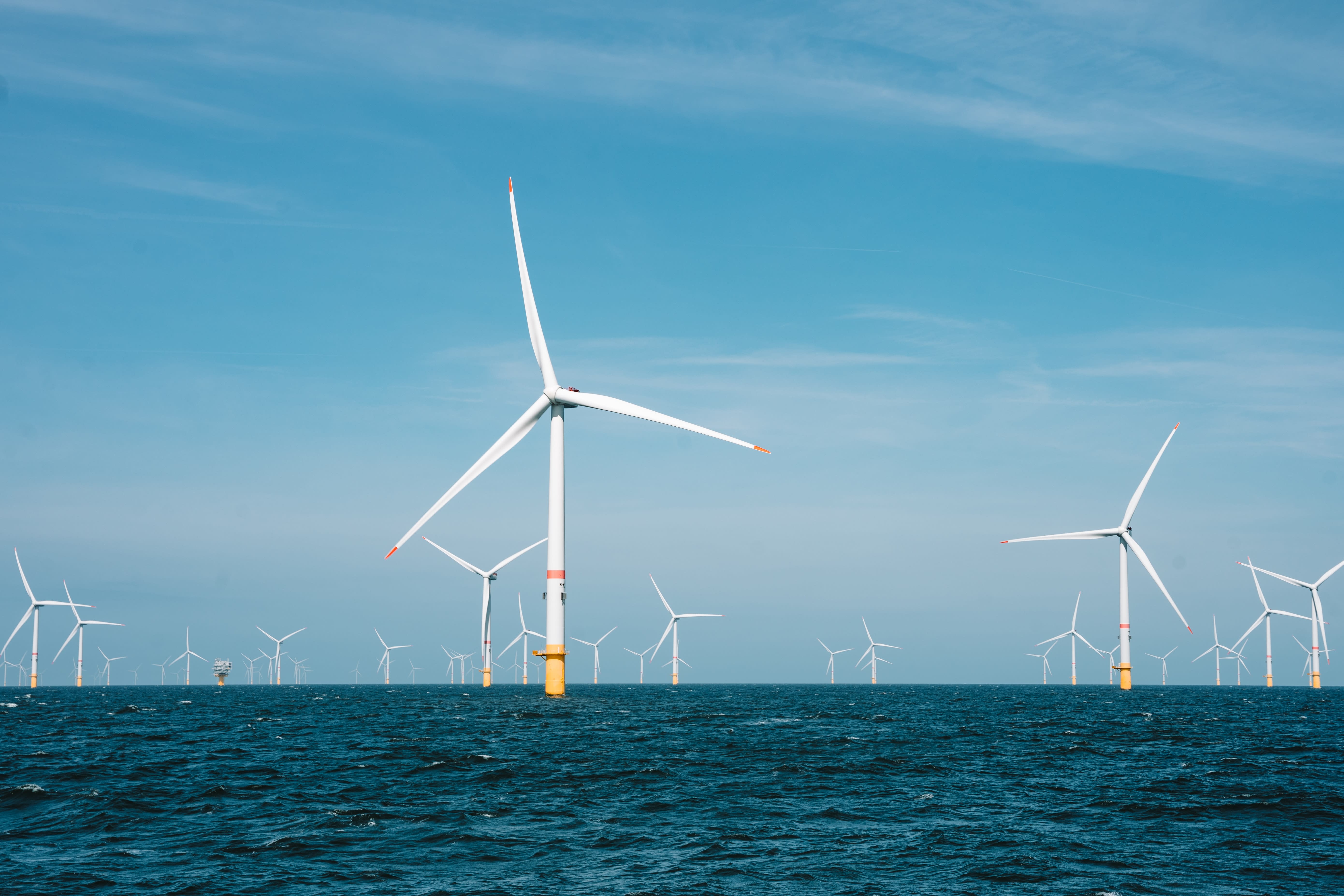
The pros of wind energy
Who would have thought these massive pinwheels would have such amazing capabilities?
💚 Wind power is a clean and renewable energy source. Wind energy accounted for 46% of electricity generation in the US in 2021. It’s abundant, inexhaustible, and also provides electricity without using fossil fuels or polluting the air.
🏘️ It can benefit local communities! Wind projects deliver an estimated $1.9 billion in state and local tax payments and land-lease payments each year. Think about what communities could do with that extra revenue. You get a park! You get a park! And you get a park! (Channelling my inner Oprah)
🌊 Energy can be collected onshore or offshore. Wind turbines can be installed in the sea or on the coast. They can be set up on farms, ranches, and on islands. On top of mountains, in valleys, or next to highways. They can be placed relatively anywhere, meaning it can generate electricity for a lot of different communities.
🪸 Offshore wind turbines have become home to wildlife. A study has shown that offshore wind turbines have become home to fish, crabs, lobsters, and plants. They also function as artificial reefs for bottom dwelling fish. Looks like Nemo, found his home… 🤭
✍️ It has the power to create jobs. In 2021, the wind industry employed more than 120,000 Americans across all 50 states AND wind turbine technician is also the second fastest growing job!
🛢️ It can help us reduce our dependence on fossil fuels. Wind energy is a much cleaner and greener alternative to fossil fuels, it provides an abundant amount of electricity without having to depend on fossil fuels.
The cons of wind energy
Wind energy is clean, abundant, and turbines can be built relatively anywhere. So, even with all these upsides, why is that we don’t see them everywhere?
Like most things, there is a good and a bad. Even though there are a bunch of advantages, there are also drawbacks. Here are some of the cons of wind energy…
🐦 Turbines have ecological effects. Onshore, flying birds and bats have been injured or killed by running into the blades. It’s been estimated that 140,000 to 328,000 birds have been killed per year, which has raised concerns within fish and wildlife conservation groups. It’s also important to note that collision with glass buildings account for 365 million to 988 million bird deaths. I’m not saying wind turbine deaths are insignificant, but it’s important that context is giving. In addition, the construction of offshore turbines can temporarily displace wildlife, but research has shown that they return after construction. Also the base of turbine can function as an artificial reef.
👀 Some people don’t like the way wind turbines look. There is significant support for clean energy, especially wind power. However, when projects are proposed they are often met with community opposition. This type of local opposition is known as “not in my backyard.” Though there is support for wind energy, locals often don’t want turbines near their communities as they are concerned about the noise and how it can change the aesthetic of the landscape.
💨 It can be unreliable. Wind can be intermittent, meaning wind may not always be consistent. This means suppliers and cities must have an energy reserve just in case the wind dies down for long amounts of times.
🔊 Turbines can produce unpleasant noise. Turbines are generally placed about 0.2 miles away from residences. The average sound level at this distance is 43 decibels, for reference average refrigerator runs at 40 decibels.
💰 Historically, turbines have been expensive to build. An upfront investment for turbines and underground power lines are needed to get these babies built! Which can be a little pricey, but as technology is improved and scaled up, costs have fallen. Plus, there’s abundant wind power as long as there’s wind.
So there you have it: wind energy pros and cons. While wind energy has some limitations, the advantages make it a key player for the transition to a cleaner and greener future!
